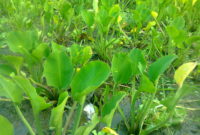“High yielding” is kind of a misnomer. The actual yield you get depends on the crop’s maximum potential yield, which may in turn be reduced by:
- Any mismatch in the crop’s climate and soil adaptations compared to the actual climate/soil conditions that it’s grown in.
- The crop’s fertilizer efficiency and other factors which might increase or decrease the effective fertilizer efficiency.
- Pests and diseases compared to the crop’s relative resistance and endurance against those diseases.
- Other stress factors like drought stress, flood stress, and whatever temperature conditions might prevail during a given year, compared to the climate averages.

So basically a “high yielding” crop might not be high yielding at all if it’s grown in conditions that are poorly suited to it, and as most high yielding crops are also fertilizer hogs with poor horizontal resistance and little to no consistent disease endurance they tend to do badly in general unless intensively coddled. The labor and material costs for keeping up with such treatments can be quite steep, potentially undermining any gains from the ‘high yielding’ aspects which are ultimately not even guaranteed.
This is basically the downside to an industrialized crop breeding system which ignores many if not all of these important factors and which produces crops which are rarely well specialized for the regions where they’ll be grown. As a result it may take some trial and error to find a variety that actually does well in your area, with or without extensive inputs.
